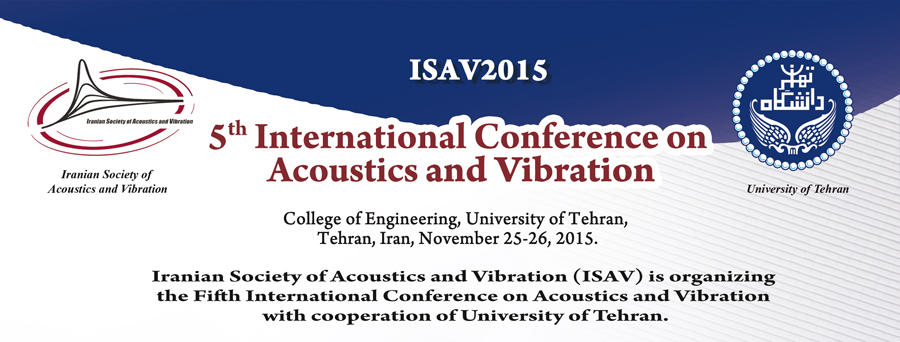Prof. Nuno Maia,
Technical University Of Lisbon
Instituto Superior Tecnico
Dept. Mech. Eng.
Nuno Manuel Mendes Maia obtained his first degree in 1978 and his master's
degree in 1985, both in mechanical engineering from Instituto Superior
Tecnico (IST), University of Lisbon. He received his PhD in mechanical
vibrations (1989) from Imperial College London, UK. He had his habilitation
in mechanical engineering in 2001 from IST, University of Lisbon. Prof. Maia
has authored and co-authored two textbooks and more than a hundred and sixty
scientific publications in international journals and conference proceedings
on the subject of modal analysis and structural dynamics. He is an associate
editor of the Shock and Vibration Journal and of the Journal of Vibration and
Control, a member of the Society for Experimental Mechanics (SEM), of the
International Institute of Acoustics and Vibration (IIAV), and of the
Portuguese Society of Acoustics (SPA), where he is responsible for the area
of vibrations. He has participated and coordinated various national and
international research projects and has been responsible for the organization
of the International Conference on Structural Engineering Dynamics (ICEDyn),
since 2002. His current research interests are modal analysis/testing,
updating of finite element models, coupling and structural modification,
damage detection, modeling of damping, transmissibility in multiple
degree-of-freedom systems, and force identification.
An Overview of Modal Analysis: Recent Advances on Classical Topics
Modal Analysis and Modal Testing have evolved enormously since the early
seventies until nowadays, with the advance of digital computers, analyzers
and all sorts of measuring equipment. Initially, a lot of effort was directed
towards the development of identification techniques, a research area that
today is not very active anymore, as most of the techniques have reach a
mature state and one can find the best ones commercialized by the industry.
Other topics have emerged and the initial restrict concept of modal analysis
associated to system identification has been enlarged and that is the way
that we should face it, encompassing a huge variety of subjects, like
coupling of substructures, modeling of joints, nonlinear behavior, updating
techniques, variability versus uncertainty, damage identification, modeling
of damping, transmissibility, force identification, rotor-dynamics, laser
techniques, vibro-acoustics, just to name a few. All of these subjects and
many more can be addressed from the point of view of modal analysis and modal
testing and all of them keep active. The main reason for such an interest and
activity relies on the fact that, inspite of all the research that is
produced in the various domains, there are subjects that remain open because
there are some issues here and there that have not been entirely and
satisfactorily solved. An example of this is the proper modeling of joints:
when one has a very complex structure to model, the usual approach is to
subdivide it in substructures, each of which can be modeled to a very high
degree of accuracy, either using numerical tools (or even analytical ones) or
through an experimental way, i.e, in an inverse sense; however, even with
such an accuracy at each substructure level, when it comes to couple all of
the parts together, the comparison between the experimental results of the
whole structure and the predictions from the model may reveal large
discrepancies. This is due to the fact that wrong assumptions and therefore
wrong models have been used to represent the behavior of the connecting
joints. These type of components can be particularly difficult to model, due
to their complex geometry, complex material behavior, or both. One may be
talking about (i) welded, riveted or bolted joints, normally assumed in the
numerical model as totally rigid, when in fact they always allow for some
flexibility or (ii) more complex situations, where one may be dealing with
visco-elastic materials of complex geometry and nonlinear behavior, seals,
journal or roller bearings, etc. Many other topics are recurrently revisited,
like force identification, measurement or estimation of rotational degrees of
freedom, coupling and uncoupling techniques, with their numerical
difficulties, etc. In the present talk, some of these matters are discussed
and some recent progresses are reported, namely those related to the
detection of damage, the transmissibility in multiple degree of freedom
systems, force identification and model updating.
|

|
